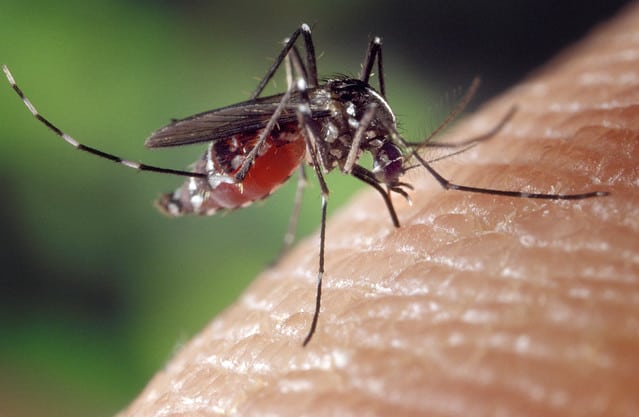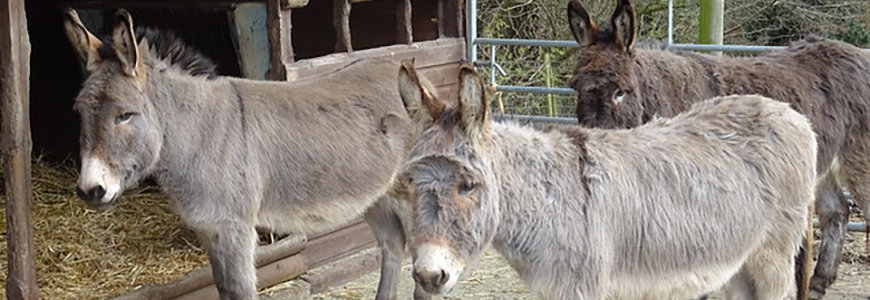This article contains information about the raised EEE threat level in Barrington, New Hampshire.
Health officials identified a horse in Northwood infected with Eastern equine encephalitis (EEE) last week, which was later euthanized, reported WMUR. This raised the town of Northwood to high-risk of infection, while surrounding towns – including Barrington, Nottingham, and Strafford, among others – to moderate risk of EEE infection. Mosquitoes harboring the EEE virus were also found in Pelham, on the border of Massachusetts, in early August.
Two other mosquito-transmitted viruses, Jamestown Canyon Virus and West Nile Virus, are also present in New Hampshire. Since first documented in the state in 2013, there have been seven cases of Jamestown Canyon Virus, according to the NH Department of Health and Human Services (DHHS). In late August this year, DHHS identified a batch of mosquitos that tested positive for West Nile Virus in Manchester, although no human cases have been reported in 2019. All three mosquito-borne viruses have similar symptoms in humans, and treatment is mainly in the form of supportive care, meaning there are no disease-specific treatment regimens.
 The life cycle of mosquito averages about two months. Growth from an egg through larval phases takes place mostly in water, until the flying adult stage occurs - which we all know and hate for disrupting warm summer afternoons. Only females bite and take blood meals from humans and animals, according to the Environmental Protection Agency. Female mosquitoes require the protein in blood in order to develop eggs. To prevent insect bites, DHHS recommends using insect repellent containing 30% or less DEET, which has shown to be very effective. “Repellents that contain Picaridin or oil of lemon eucalyptus have also been determined to be effective,” reports DHHS, however, “Vitamin B, ultrasonic devices, incense, and bug zappers have not been shown to be effective in preventing mosquito bites.”
The life cycle of mosquito averages about two months. Growth from an egg through larval phases takes place mostly in water, until the flying adult stage occurs - which we all know and hate for disrupting warm summer afternoons. Only females bite and take blood meals from humans and animals, according to the Environmental Protection Agency. Female mosquitoes require the protein in blood in order to develop eggs. To prevent insect bites, DHHS recommends using insect repellent containing 30% or less DEET, which has shown to be very effective. “Repellents that contain Picaridin or oil of lemon eucalyptus have also been determined to be effective,” reports DHHS, however, “Vitamin B, ultrasonic devices, incense, and bug zappers have not been shown to be effective in preventing mosquito bites.”
Human EEE infection is quite rare in the United States. Nationwide, about seven cases of EEE are reported annually, with the majority from the states of Florida, Massachusetts, New York, and North Carolina. Since 2009, just three cases have been reported in New Hampshire.
 The Centers for Disease Control and Prevention (CDC) reports that symptoms typically occur four to ten days after a bite from an infected mosquito. The first signs range from chills and fever to muscle and joint pain, often resembling flu-like symptoms. Depending on the patient, some people recover within a week or two – this is the systemic version of the disease. It’s the other version, known as encephalitis, that is the bigger threat – involving swelling of the brain. According to the CDC, “Signs and symptoms in encephalitic patients are fever, headache, irritability, restlessness, drowsiness, anorexia, vomiting, diarrhea, cyanosis, convulsions, and coma.” If you have any of these symptoms, contact your health care provider right away.
The Centers for Disease Control and Prevention (CDC) reports that symptoms typically occur four to ten days after a bite from an infected mosquito. The first signs range from chills and fever to muscle and joint pain, often resembling flu-like symptoms. Depending on the patient, some people recover within a week or two – this is the systemic version of the disease. It’s the other version, known as encephalitis, that is the bigger threat – involving swelling of the brain. According to the CDC, “Signs and symptoms in encephalitic patients are fever, headache, irritability, restlessness, drowsiness, anorexia, vomiting, diarrhea, cyanosis, convulsions, and coma.” If you have any of these symptoms, contact your health care provider right away.
Vaccines are available for horses, and other livestock such as donkeys, mules, pigs, and llamas are also susceptible to the virus. Cats and dogs can become infected with West Nile Virus and EEE, although it has been very rarely observed and most pets are able to make a full recovery. Symptoms in animals may look similar to that of rabies, which is a much more common condition in this part of the world – irritability, circling and uncoordinated movements, weakness or convulsions. You can reduce places for mosquitos to congregate and lay eggs by changing water buckets often and getting rid of any standing water in your yard. The first frost will curb the threat of EEE transmission for the season.
Loren is a freelance writer from southern NH. To share a story idea or collaborate on a writing project, you can contact her at: This email address is being protected from spambots. You need JavaScript enabled to view it.. Photo Attributions: Ades albopictus, by CDC Global, licensed under CC BY 2.0.



